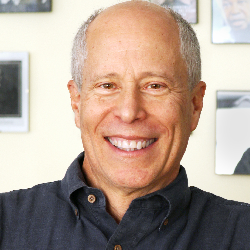If you haven’t been living under a rock, then you know that on April 14th, two African American men were arrested for trespassing in a Philadelphia Starbucks. They had committed no act other than sitting and waiting for a friend to meet them when the store manager called the police. The incident was unquestionably outrageous and has prompted harsh criticism for the company. In response, Starbucks CEO Kevin Johnson has issued an apology and proposed implicit bias training for over 175,000 Starbucks employees.
The pain and anger resulting from this unfortunate incident is completely understandable and justified. How many times over the past few years have we watched videos of African Americans being treated unjustly, brutally, and even fatally? These incidents reveal the outrageous and persistent stain of American racism.
Incidents like these bring background dynamics of bias into bold relief and demonstrate how bias impacts individuals and institutions. We know that no single strategy, in and of itself, will be enough to ensure that these incidents remain rare, or never occur at all. Education, like the announced day of training, is part of a systemic approach, but will not by itself solve the problem. So how should Starbucks respond?
Special case vs. common case problems
Full disclosure: I have done a bit of work with Starbucks in the past.
Starbucks has long been seen as an organization that values diversity and inclusion. I’m sure many remember the company’s 2014 response to the shooting of Michael Brown in Ferguson, Missouri by attempting to encourage racial dialogue through their ill-fated “Race Together” program. They have taken strong public stances, even in the face of boycotts, in support of LGBT rights. The company’s founder, Howard Schultz, has been an outspoken advocate of diversity and inclusion.
Dr. Edwards Deming, the quality guru, made an important distinction between “special case” problems and “common case” problems. Special case problems are generally aberrations, often by an individual or groups of individuals, but don't reflect an organization's general intentions. Common case problems are generally more systemic—the result of an organizational policy or leadership.
Treating common case problems with special case responses can be futile. If each case is dealt with as if it is unique when in fact it is systemic, it results in endless frustrating interventions. On the other hand when special case problems are addressed with common case responses they can cause more problems than solutions because they may undo a lot of things that are working in the effort to address the few cases when they’re not. Imagine the impact, for example, of putting in a time clock because 5 employees out of 5,000 come in late. You may solve the problem of the 5, but anger and disincentivize the other 4,995.
Because of the Starbucks' leadership demonstrated commitment to diversity and inclusion, this incident—based on what we know now—strikes me as a special case problem. While Starbucks still has a ways to go, their intention is clear.
Starbucks is a company with over 27,000 stores and 250,000 employees. Given the nature of all human beings to have bias, the chance that a quarter of a million people would not have any incidents like this is virtually impossible.
Moving forward
In the best cases, quality education is the first phase of a four-part strategy that can build a bias-resistant workplace. The second phase is installing priming or nudging techniques that can remind people to use what they learned in the educational experience. Learning can, in that way, be brought to the moment it is needed.
The third phase requires taking a look at the structures and systems that are in place and instituting new practices that are more bias resistant. One example might be using diverse panels when interviewing and hiring. Finally, an accountability system has to be put in place to ensure that the organization can regularly track where breakdowns like this might occur and respond pro-actively to presenting patterns.
Starbucks has made it clear that the day of training they have announced for May 29th is just the beginning of their effort to correct the problem. Some people may avoid the stores until they see a change, or for the rest of time. The rest of us will have to wait and see how the company responds to the challenge it now faces.
Howard Ross is author of Our Search For Belonging: How Our Need to Connect Is Tearing Us Apart. He a lifelong social-justice advocate and the founding partner of Cook Ross, Inc. Considered one of the world's seminal thought leaders on identifying and addressing unconscious bias, he is the author of ReInventing Diversity: Transforming Organizational Community to Strengthen People, Purpose and Performance and the Washington Post bestseller Everyday Bias: Identifying and Navigating Unconscious Judgments in Our Daily Lives.
Photo by Charles Koh on Unsplash




